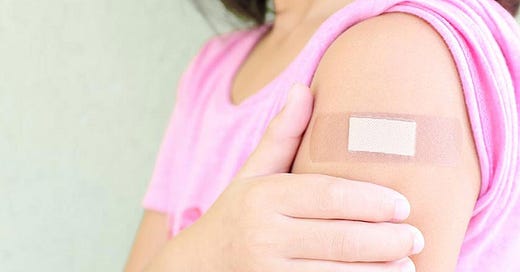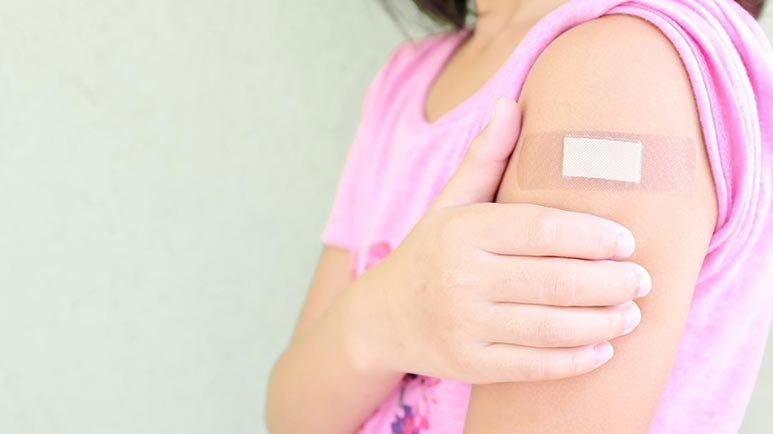Massive Study Reveals Serious Risks of COVID Jab in Children
A recent study involving 1.7 million kids sheds light on the adverse reactions of getting the COVID-19 shot, highlighting its major implications for pediatric health policies.
STORY AT-A-GLANCE
A large-scale study involving 1.7 million children and adolescents found cases of myopericarditis (inflammation of the heart muscle and its surrounding tissue) only in the group that received the Pfizer COVID-19 injection
The research revealed that while this age group didn’t face a high risk from COVID-19 itself, they did experience side effects related to the injection
Protection against COVID-19 infection provided by the injection was short-lived, lasting only 14 to 15 weeks
No deaths were recorded among the study participants, regardless of their vaccination status
Mild cases of myocarditis and pericarditis were more frequently observed following the second dose of the Pfizer injection, particularly in males under the age of 18
A recent preprint study examining the Pfizer-BioNTech COVID-19 shot in children and adolescents has raised significant concerns about its safety profile. This large-scale study, involving over 1.7 million children between the ages of 5 and 15, revealed that cases of myopericarditis, a disease marked by heart inflammation, were found exclusively in those who received the shot.
Testing the Efficacy of Pfizer’s Shot
The study, published in OpenSAFELY (an open-source medical platform in the U.K.), provides compelling evidence that Pfizer-BioNTech’s BNT162b2 shot protects against the virus for no more than 14 to 15 weeks.1
The limited window of supposed protection adds yet another layer to the debate about whether the benefits of the jab outweigh the risks for young people. The findings are particularly important because it challenges the longstanding notion that vaccinating children against COVID-19 will improve outcomes against the disease.
For the analysis, a significant dataset was provided by the National Health Service (NHS) England. The researchers selected children aged 5 to 11 years old, as well as adolescents 12 to 15 years old, and matched them with criteria such as region, evidence of prior infection, prior vaccination status, other childhood shots received and second dose (for comparison).
Clinically vulnerable children and those with prior COVID-19 infections before injection were excluded, ensuring the sample focused on those who were generally healthy prior to vaccination.2
Does the COVID-19 Shot Truly Protect Its Recipients?
Using different analytical methods, the researchers were able to gather different information regarding the effectiveness of the BNT162b2 shot. Again, the first, and most startling discovery was that the shot only gave “protection” for 14 to 15 weeks.3
“By 14 weeks the cumulative incidence of positive SARS-CoV-2 test was similar in the second and single dose groups,” the researchers said.4 In a report by The Defender, Brenda Baletti, Ph.D., summarizes the other findings:5
“Of the 1,262,784 children in the adolescent part of the study — vaccinated and unvaccinated — there were only 72 emergency room visits, 90 COVID-19 hospitalizations — three of which were critical care for unvaccinated children — and no deaths.
There were nine cases of pericarditis and three cases of myocarditis, all in the vaccinated group.”
With these findings, the UK researchers add to the confirmed, and ever-growing body of evidence linking the COVID-19 shots to myocarditis and pericarditis among youth.6 Moreover, although the jab slightly reduced emergency room visits and hospital stays, these events were rare across all groups overall, jabbed or not. In addition, no deaths were recorded among anyone in the study population.7
The frequency of hospitalization was slightly higher in the group who only got one dose compared to those who got two doses. While the findings may paint two doses as an effective deterrent, Children’s Health Defense’s chief scientific officer Brian Hooker, Ph.D., proposes another theory, the “healthy vaccinee effect.” This applies to people who get adverse events following a first dose, which led to an increase in hospitalization. As a result, these children didn’t get a second dose.
The COVID-19 Shot Put Public Health at Risk
The OpenSAFELY study shines an important light on a topic I’ve been discussing for a long time — the COVID-19 shot will eventually put the public’s health at risk, be it children or adults. As early as 2021, an increase in myocarditis cases was immediately apparent after getting the shot, which was explored in my article “Study Pfizer Vaccine Increases Myocarditis Threefold.” Israeli researchers published their findings in The New England Journal of Medicine, noting:8
“The risk appears to be highest among young men. We found that the risk of myocarditis increased by a factor of three after vaccination, which translated to approximately 3 excess events per 100,000 persons; the 95% confidence interval indicated that values between 1 and 5 excess events per 100,000 persons were compatible with our data.
Among the 21 persons with myocarditis in the vaccinated group, the median age was 25 years (interquartile range, 20 to 34), and 90.9% were male.”
Despite the findings being published, people around the world are still taking the mRNA shots. In May 2024, I published an article that explored the still-growing problem of people getting myocarditis because of it.
I believe that the public deserves to know the truth about what is happening, but authorities are keeping us in the dark. Despite issuing a Freedom of Information Act (FOIA) request, the U.S. Centers for Disease Control and Prevention (CDC) replied with a fully redacted document.9
And the cardiac problems are still ongoing, as evidenced in the OpenSAFELY study. It’s beyond clear that the mRNA COVID-19 shots are one of the most dangerous drugs ever released. To end the assault on our youth, tell your friends and family to avoid the shots in the first place. For those who already got the shot, don’t take any more boosters.
Has Your Child Received the COVID-19 Shot?
If your child has received the shot or if you know a parent whose child did, there are strategies available to help repair the poisonous assault on their system. I recommend the I-RECOVER program by the Front Line COVID-19 Critical Care Alliance (FLCCC). On their website, you’ll find two ways to approach management — long COVID10 and post-jab.11
The World Health Council also published an extensive database of remedies that help inhibit and eliminate spike protein, which most experts agree is the primary culprit of the shot-induced adverse events.12 For additional strategies that will help protect children, I recommend reading my article “Identifying Long COVID in Children and Adolescents.” There, I discuss the importance of probiotics, melatonin and NAD+ for boosting your body’s defense.
Educating yourself about the symptoms of pericarditis and myocarditis will also help. While both affect the heart, they manifest in different ways. Myocarditis refers to inflammation of the myocardium, which is the actual heart muscle. On the other hand, pericarditis refers to an inflamed pericardium, which is the sac-like layer surrounding the heart.13 According to the Ann & Robert H. Lurie Children's Hospital of Chicago, symptoms to watch out for include:14
Myocarditis:
Fatigue
Shortness of breath
Abnormal heart rhythms
Lightheadedness or fainting
Pericarditis:
Chest pain that worsens when lying down, then improves when sitting up
Fever
Shortness of breath
Higher heart/rate and/or low blood pressure
Disclaimer: The entire contents of this website are based upon the opinions of Dr. Mercola, unless otherwise noted. Individual articles are based upon the opinions of the respective author, who retains copyright as marked.
The information on this website is not intended to replace a one-on-one relationship with a qualified health care professional and is not intended as medical advice. It is intended as a sharing of knowledge and information from the research and experience of Dr. Mercola and his community. Dr. Mercola encourages you to make your own health care decisions based upon your research and in partnership with a qualified health care professional. The subscription fee being requested is for access to the articles and information posted on this site, and is not being paid for any individual medical advice.
If you are pregnant, nursing, taking medication, or have a medical condition, consult your health care professional before using products based on this content.





